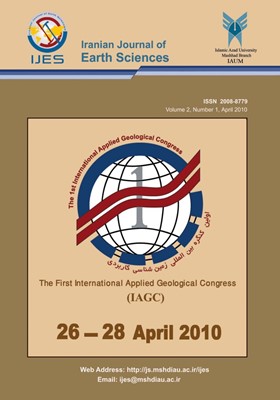Asbestos Presence in a Factory that Produced Asbestos-Containing Products
Subject Areas : Mineralogy
1 - Department of Geology, Faculty of Science, University of Zagreb, Horvatovac 95, 10000 Zagreb, Croatia
Keywords:
Abstract :
In 2007, research was carried out to determine the type and amount of asbestos fibers in a Croatian factory with a long history of making asbestos-containing products.Since the 1970s, asbestos fibres have been considered carcinogenic in humans i.e as a known cancer-causing agent. In the environment, asbestos fibres are inactive and naturally resist biodegradation. In time, fibres can only be ground into smaller particles by mechanical force. These small particles in the air present a health hazard. Because of their small size, shape and durability, asbestos fibres can easily be inhaled and stick to the lung tissue, causing serious respiratory problems. Among these are diseases with long latency periods of 10 to 40 years such as: asbestosis, mesothelioma and lung cancer. Asbestos is the generic, industrial name for a group of six minerals determined by common size and inherent physical properties. Crocidolite, amosite, anthophyllite, tremolite and actinolite are all asbestos minerals from the amphibole mineral group. The sixth mineral, chrysotile, is a mineral from the serpentine mineral group. Asbestos fibres are particles longer than, or equal to, five μm with a length to width ratio greater than or equal to 3:1; however, the ratio can be higher than 20 or even 1000. They are inflammable, thermally stable, resistant to biodegradation, chemically inert to most chemicals and have low electrical conductivity. Because of these attributes, asbestos was heartily embraced in industrial production.Different methods are used to determine the type and quantity of asbestos fibres in the air. Some of the most common methods and instruments are: polarizing light microscopy (PLM), phase contrast optical microscopy (PCM), scanning electron microscopy (SEM), analysis with electron diffraction spectra (SAED) with energy dispersive X-ray analysis (EDS), powder X-ray diffraction technique (XRD), and transmission electron microscopy (TEM). Some of above-mentioned methods (PCM, PLM, XRD) are currently popular due to their low cost, but using these methods exclusively could lead to false estimates of asbestos levels. It is hard to distinguish asbestos fibres from certain other fibres like artifacts, organic or inorganic. Therefore, it is important to observe not only the habit of minerals, but also the chemical composition of them. A combination of SEM and EDS gives information about both the habit and the chemical composition of the observed fibers, and so is suitable for asbestos analysis. Different methods of analysis are displayed and compared in this paper. Analyses were made using SEM with EDS and XRD. All samples were collected in working areas of a factory which used asbestos in production. Presence of different types of asbestos was confirmed.


